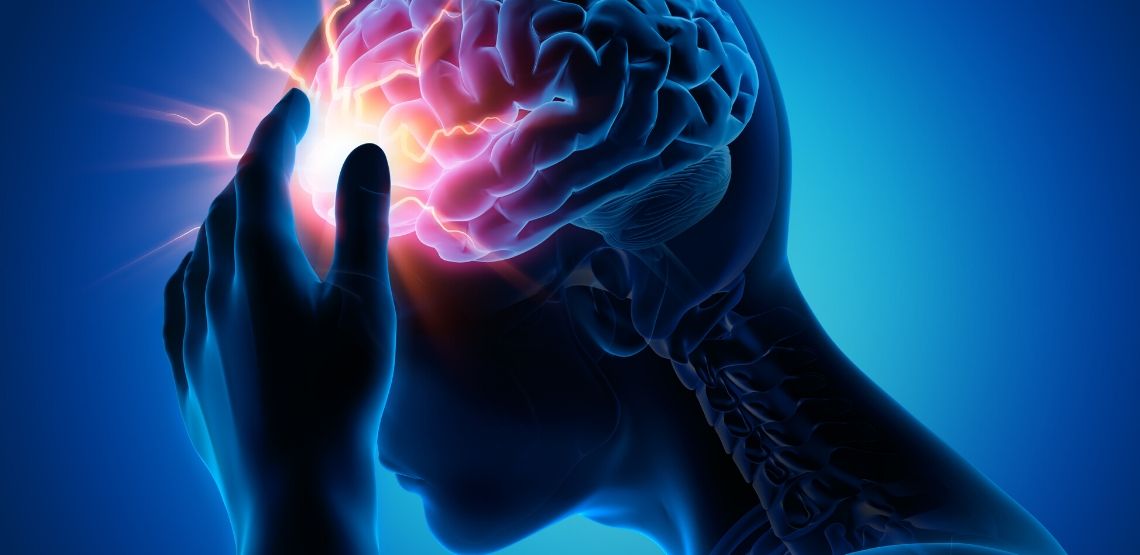Headache vs Migraine
When your head is throbbing, it may be difficult to determine if you are suffering from a headache or migraine, or something else entirely. The headache vs migraine battle is common, and trying to figure out which you suffer from can be difficult.
However, it is important to differentiate between the two conditions in order to get faster relief and possibly prevent future episodes from occurring.
What is a Headache?
Headache is defined as pain that can range from mild to severe in the head or upper neck, face and maxillary area. Headaches tend to occur on both sides of the head and can last from 30 minutes up to a week.
There are various types of headaches, including:
- Tension headache – this is the most common type of headache and occurs due to stress, anxiety, or muscle strain.
- Cluster headache – these are incredibly severe headaches that are typically felt on one side of the head and occur in “clusters”, or cycles, where you have headache attacks followed by period of no headaches.
- Sinus headache – these headaches occur along with sinus infection and typically present with additional symptoms including stuffy nose, congestion, cough, fever and facial pain or pressure.
- Chiari headache – these headaches occur due to a birth defect (Chiari malformation) that results in the skull pushing against the brain which can result in head pain at the back of the head.
- Thunderclap headache – these headaches are extremely severe and develop rapidly (less than one minute). It may be a symptom of an underlying condition including subarachnoid hemorrhage, stroke, aneurysm, or other injury. It is important to seek immediate medical attention if you think you are suffering a thunderclap headache.
What is a Migraine?
Migraines involve severe and intense head pain that is often disabling and interferes with the ability to perform normal activities. Migraines typically affect one side of the head, although it is possible that both sides of the head are affected. In addition to head pain other migraine symptoms often include:
- Nausea or vomiting
- Pain in the temples
- Light sensitivity
- Sound sensitivity
- Vision changes (blurred vision, seeing spots, temporary vision loss)
- Irritability
Migraines are typically categorized as a migraine with aura and migraine without aura.
Migraine With Aura
The aura is the appearance of neurological symptoms that occur before the headache, usually 10 to 30 minutes prior to an episode. There are different types of aura including:
- Seeing flashing spots, lights, lines
- Mental confusion, decreased alertness
- Tingling or numbness in the arms, hands, or face
- Usual sense of touch, taste, or smell
Migraine Without Aura
This is the most common type of migraine, accounting for 75% of all migraines. It does not have an aura prior to the onset of headache symptoms.
Various triggers of migraine have been identified including anxiety, alcohol use, hormonal changes (pregnancy and menopause) and birth control use.
Related Search Topics (Ads)
Treatment
Most tension headaches subside with over the counter medications including acetaminophen, ibuprofen and aspirin. Amitriptyline may be prescribed for chronic tension type headaches.
Prevention of Headaches
Often, headaches are caused by stress. It is therefore important to learn steps to manage your stress levels, which in turn will help to reduce headache pain and decrease your risk of future headaches. Some stress relieving therapies include:
- Massage
- Acupuncture
- Heat therapy
- Meditation
- Relaxation techniques
Natural Treatment for Migraines
There are therapies that may be helpful. Some helpful holistic treatments like meditation, acupuncture and some nutraceuticals may help. Other remedies include:
- Magnesium: can prevent migraine attacks (nuts and seeds, green leafy vegetables, legumes, dark chocolate).
- Riboflavin: vitamin B2, which in high doses could prevent migraine attacks (beef, tofu, milk, fish, mushrooms, pork, spinach, almonds, avocados and eggs).
- Co-enzyme Q10 (CoQ10): this antioxidant enzyme reduces the frequency and intensity of migraine when taken regularly.
Other natural alternatives to help prevent migraines include ginkgo biloba, peppermint, coffee, lavender and butterbur.
Treatment for Migraines
If you are suffering with a migraine, there are a variety of things you can do to help calm your symptoms, including:
- Laying down in a dark, quiet room with a cold compress on your head.
- Taking over the counter pain relievers (aspirin, ibuprofen, ketorolac, or naproxen).
- Taking prescription medications (triptans including Maxalt, Imitrex, or ergots including Migergot and Cafergot).
- Taking medications to relieve other symptoms such as nausea and vomiting (promethazine, chlorpromazine and prochlorperazine).
It is important to keep in mind that if you take migraine medication more than 10 days a month, you could suffer with rebound headaches.
Prevention of Migraines
Preventing migraines is believed to be the best treatment option for migraines. Preventative steps you can take include:
- Consuming a healthy diet, staying hydrated, limiting your exposure to common food triggers (alcohol, chocolate, cheese, bananas, raisins, plums, avocados, citrus fruits, food preservative, artificial sweeteners and ice creams).
- Getting enough quality sleep.
- Reducing stress.
- Avoiding common medication triggers (cimetidine, hydralazine, estrogen, nifedipine, rantidine, reserpine and nitroglycerin).
- Taking prescription medications (blood pressure medications, antidepressants, antiepileptic medications, or CGRP antagonists).
Headache vs Migraine - Talking to Your Doctor
If you are suffering with head pain, it is important to determine if you are dealing with headaches or migraines. While most people suffer from a headache from time to time, chronic headaches or those that are severe and disabling warrant a trip to your doctor.
Keep track of your symptoms using a headache diary and discuss your symptoms with your doctor. Getting an accurate diagnosis in a timely manner can help to identify the best treatment options, including preventative options, that can help to reduce your symptoms and minimize the risk of suffering future headaches or migraines.


